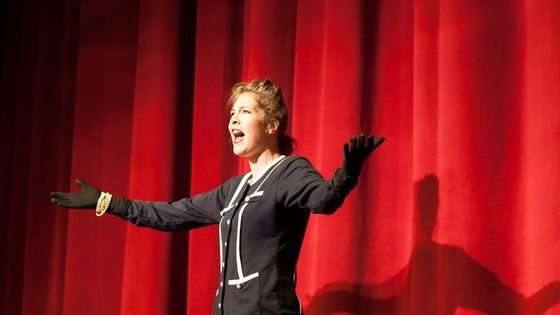The path toward growing your craft as a thespian is not always clear. Developing unique acting skills requires good command of your mental, facial, physical, vocal, and emotional expressions. Therefore, it is crucial to keep working on your acting skills to improve your technique. Here are five exercises you can use to enhance your skills in acting.
1. Man on a Bus Stop Exercise
Bus stop exercise helps to develop your imagination, body language, facial expression, and improvisation. You can engage several people or do it alone. In a group, performers interact as characters created spontaneously on an imagined bus bench. For instance, character one can join performer two, who is already seated on the bus stop bench, and look for a creative reason to make them leave.
The two performers will create their characters’ gestures, voices, and personalities to make them appear natural. If you are alone, you can observe and imagine a person’s emotions, hobbies, profession, or marital status.
You can use passers-by, the person in front of you in a queue, or people at a bus stop. Having a good imagination when acting is crucial since you should be the first person to believe your character is real before you can convince your audience. And to achieve this, you must have created a small world of your character in your mind.
2. Painting the Fence Exercise
This acting exercise aims to help performers exercise their hand motions, enabling them to apply them effectively in their roles. It is commonly helpful to people who perform in theatres where members are asked to perform specific movements in a group or individually. The exercises include:
- Painting an imaginary fence, as if your hands are a brush with paint
- Imagining there is an imaginary wall and touching it with your palms and fingers
- Working with two groups of participants and dragging an invisible rope
- Assuming that you are rowing a boat.
3. Reflecting Exercise
The exercise requires you to have a model who you can observe what they are doing and try to copy, paying attention to all details. Get a practicing partner and look at them, keenly observing their facial expressions and physical movements as you try to mirror each movement. Total concentration and quick responsiveness are necessary for this exercise. There are also several variations for practicing this exercise.
For example, in a learning setting, you can observe your fellow student as they walk around the class in character and then replay each motion as precisely as possible without exaggerating anything. The second method is to identify an acting scene to practice alone. For instance, movies or YouTube videos can be excellent resources for identifying actors and imitating their posture, speech, words, gestures, and emotions.
4. Alternating Roles
The exercise involves changing roles and can be played in a group or with a partner. The first step is to select five roles: stand-up-up comedian, security officer, motivational speaker, teacher, and sales representative. You can develop a list of the five roles you want to apply in the exercise. The exercise is fun because it captures each of the five characters with their unique gestures, intonations, energy, emotional states, and points of view. You can even apply the concept of breaking the fourth wall in this exercise.
For instance, in the comedian role, you can use the group’s reaction to know how to deliver the next line to be even more entertaining. Although you don’t acknowledge the audience’s presence, their reactions determine how to deliver your message. You can alternate playing each of the roles with your partner or with the group members. Accessing each other performance will pinpoint what worked best and the areas that could be improved. Replace the role with another one once you master any of the characters.
5. Stroking an Imaginary Animal
This exercise works well when it is performed in a group. Involve several people in your class or a group, and have everyone list several animals on paper. For example, the list can have a dog, hen, cat, monkey, or even a lion. Every participant will select an animal they like and imagine stoking it, and the other group members will guess the animal’s name. The exercise is mainly used for beginners in drama classes.
Conclusion
These are just some of the various acting exercises you can perform alone or with a group. You can also do them at home or in a class setting. Therefore, identify the ones you want to start with, be creative, have fun, and keep exercising. Whether you are enrolled in a class or trying to improve your skills alone, these tips will be helpful in your acting career.













